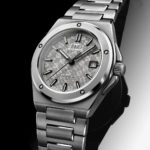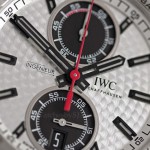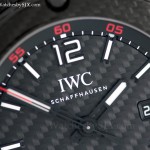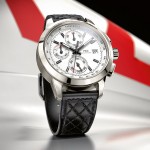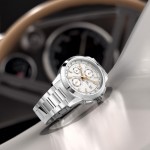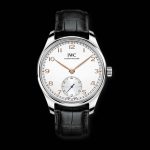Up Close: The IWC Ingenieur 40
Another Genta creation gets a reboot.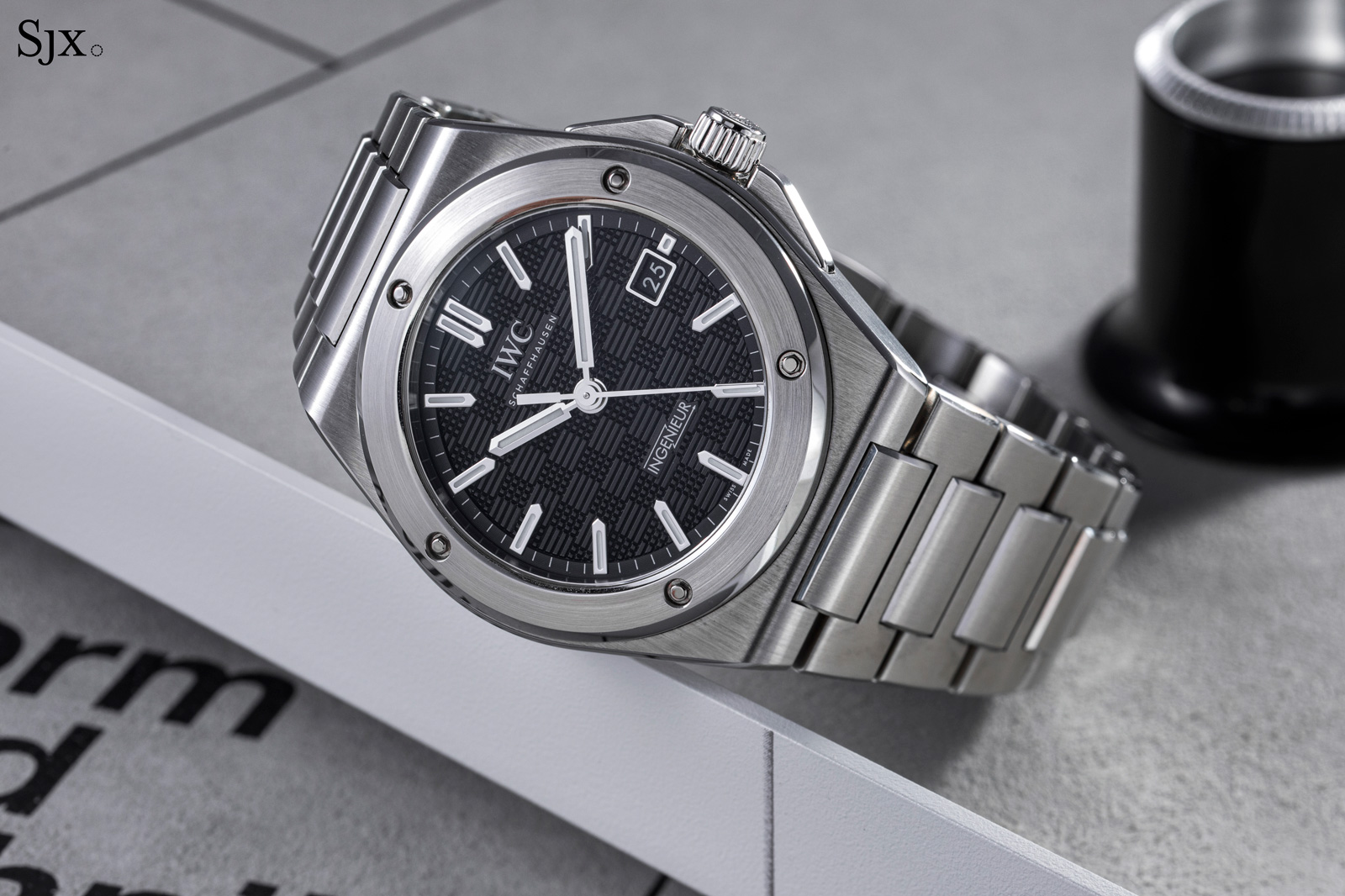
One of the most talked-about and contentious releases of the year, the IWC Ingenieur 40 is a reinterpretation of the vintage Ingenieur SL designed by Gérald Genta. By sticking closely to the design of the 1976 original – and thus catering the current fad for integrated-bracelet sports watches – IWC is positioning the Ingenieur as a key part of its line-up, despite several unsuccessful attempts to reboot the collection in recent years.
Initial thoughts
With past revivals of the Ingenieur diverging further and further from the 1976 model in terms of styling, enthusiasts have been eagerly awaiting the return of the original design. And the recent popularity of integrated bracelets made such a comeback all the more likely.
Now the Ingenieur has returned – in undoubtedly the correct guise. Though the design has been well received, there has been criticism of the movement and price.
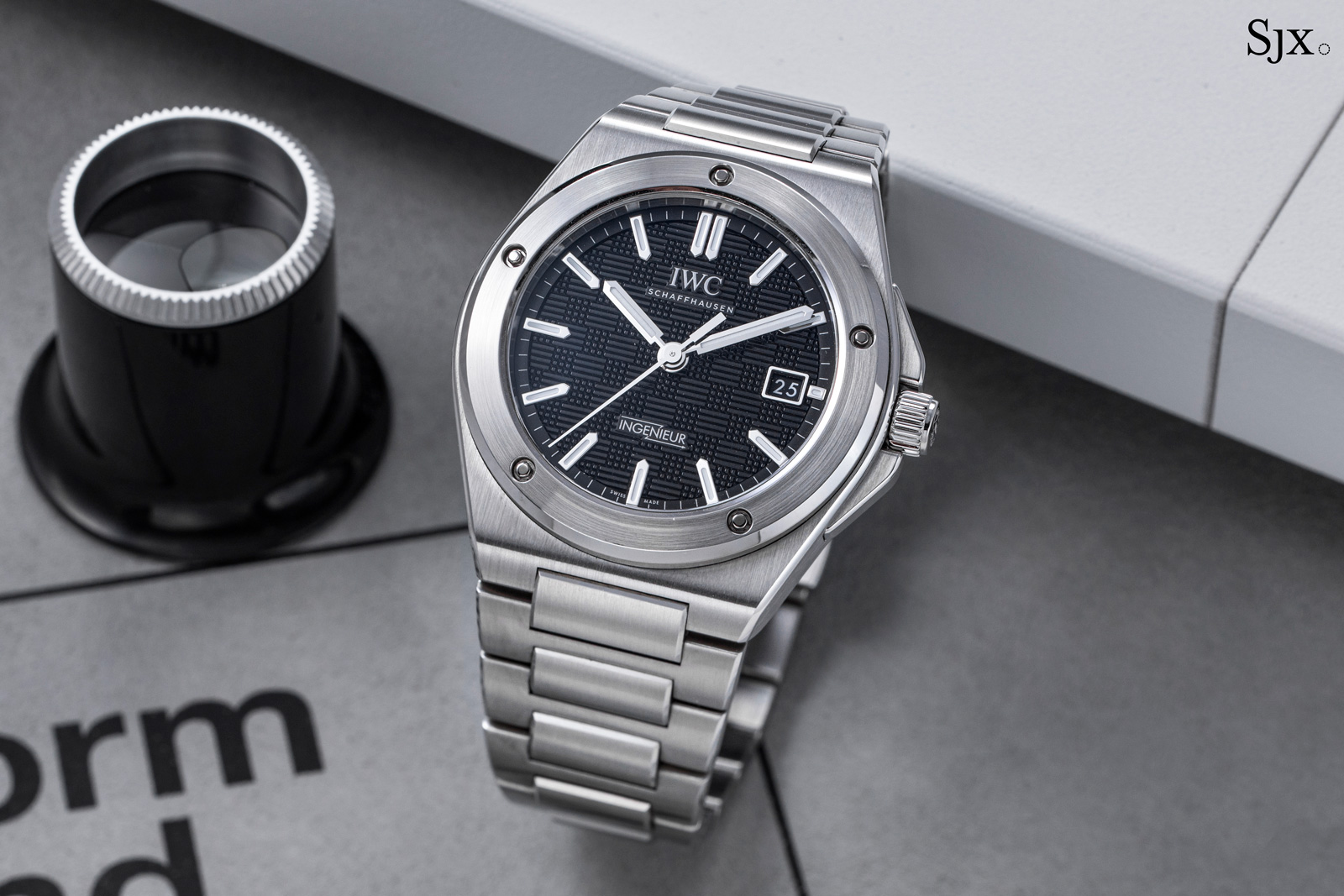
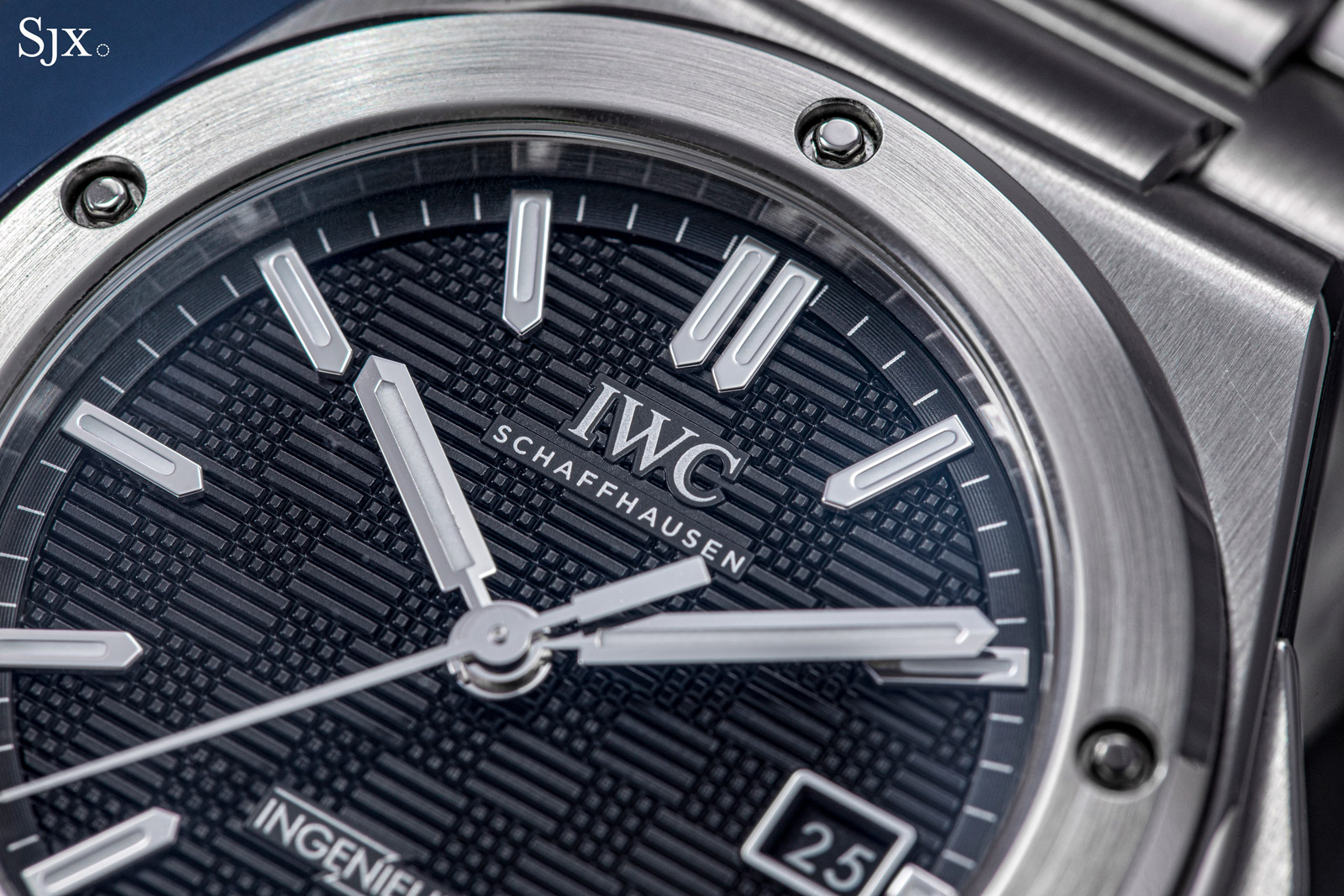
By staying faithful to the original design, the Ingenieur 40 gets it right. The construction shows attention to detail in the essential elements, including the patterned dial and bezel secured by polygonal screws, along with a slim case profile. These elements echo the vintage original, while still making it obvious the Ingenieur 40 is a new design.
Despite the visual and tactile appeal, the Ingenieur 40 is burdened with significant drawbacks. The first is the cal. 32111, a movement found in entry-level models like Mark XX, which cost quite a bit less than the Ingenieur 40. Because the cal. 32111 is produced by ValFleurier, the movement maker owned by IWC’s parent company, it also found in entry-level watches from Baume & Mercier and Panerai, which doesn’t add to its perceived value.
Considering the price of the Ingenieur 40 – it costs double the Mark XX with the same movement but without a bracelet – a higher-end movement would have been more appropriate.
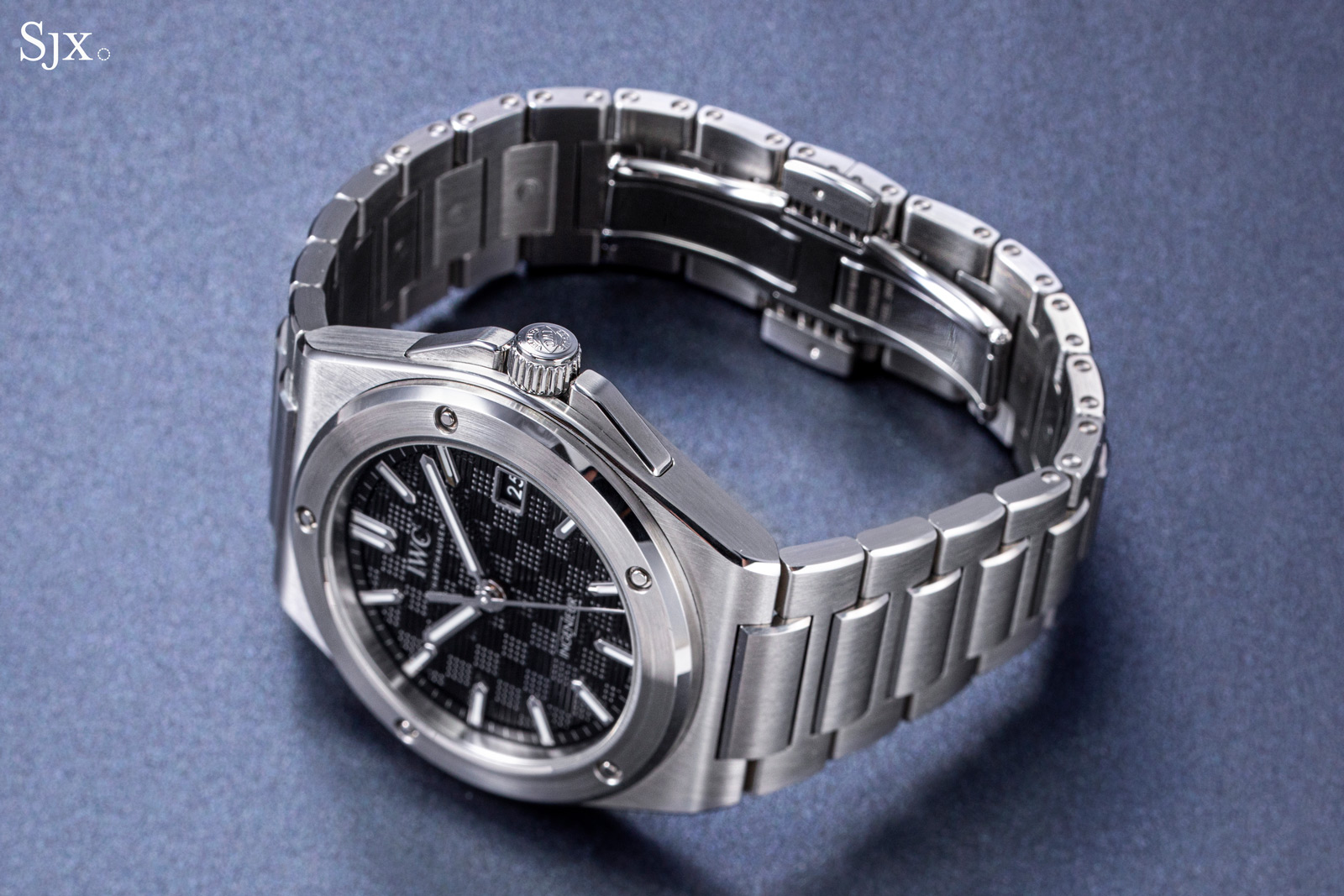
The Ingenieur costs US$11,700 in steel and US$14,600 in titanium, which puts it in a price segment occupied by other luxury-sports watches such as the Chopard Alpine Eagle and Girard-Perregaux Laureato. The competition, however, boast more sophisticated in-house movements in their respective offerings.
Among the four variants of the Ingenieur 40, my favourite is the titanium model. The monochromatic, muted finish is both understated and functional. But it is substantially pricier than the steel model, which is already expensive, making it a proposition that’s even harder to justify.
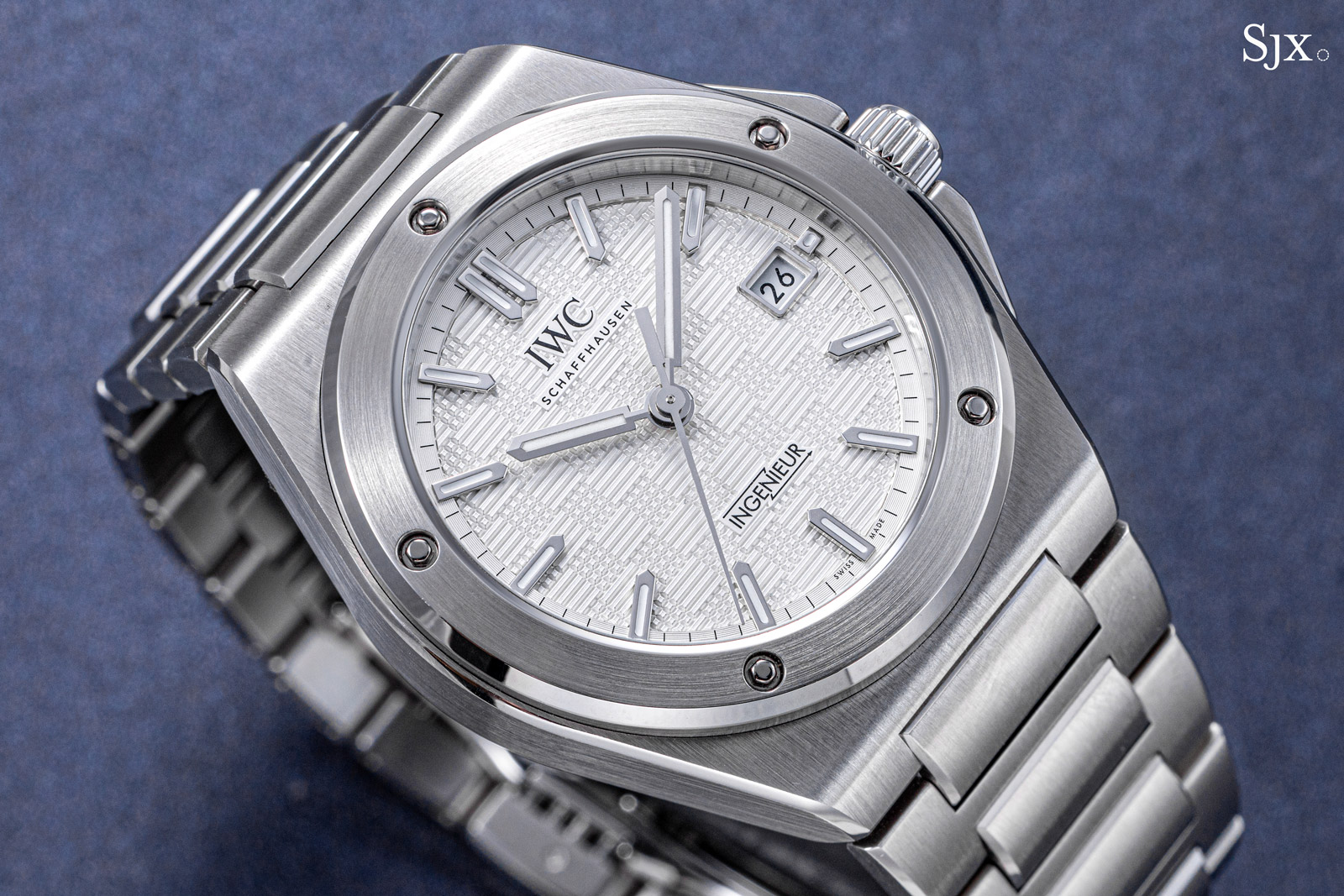
A less famous Genta design
The origins of the Ingenieur 40 date back to 1954, when the first-ever Ingenieur was conceived as a magnetism-resistant watch for professionals working in industrial and scientific environments where magnetism fields could affect the timekeeping of conventional mechanical watches.
German for “engineer”, ingenieur was first found on the dial of the ref. 666, a very different watch from today’s Ingenieur on an integrated bracelet. Somewhat ordinary looking on the outside save for a lighting bolt emblem on the dial, the ref. 666 was equipped with a soft-iron cage inside the case to protect the movement from magnetic interference.
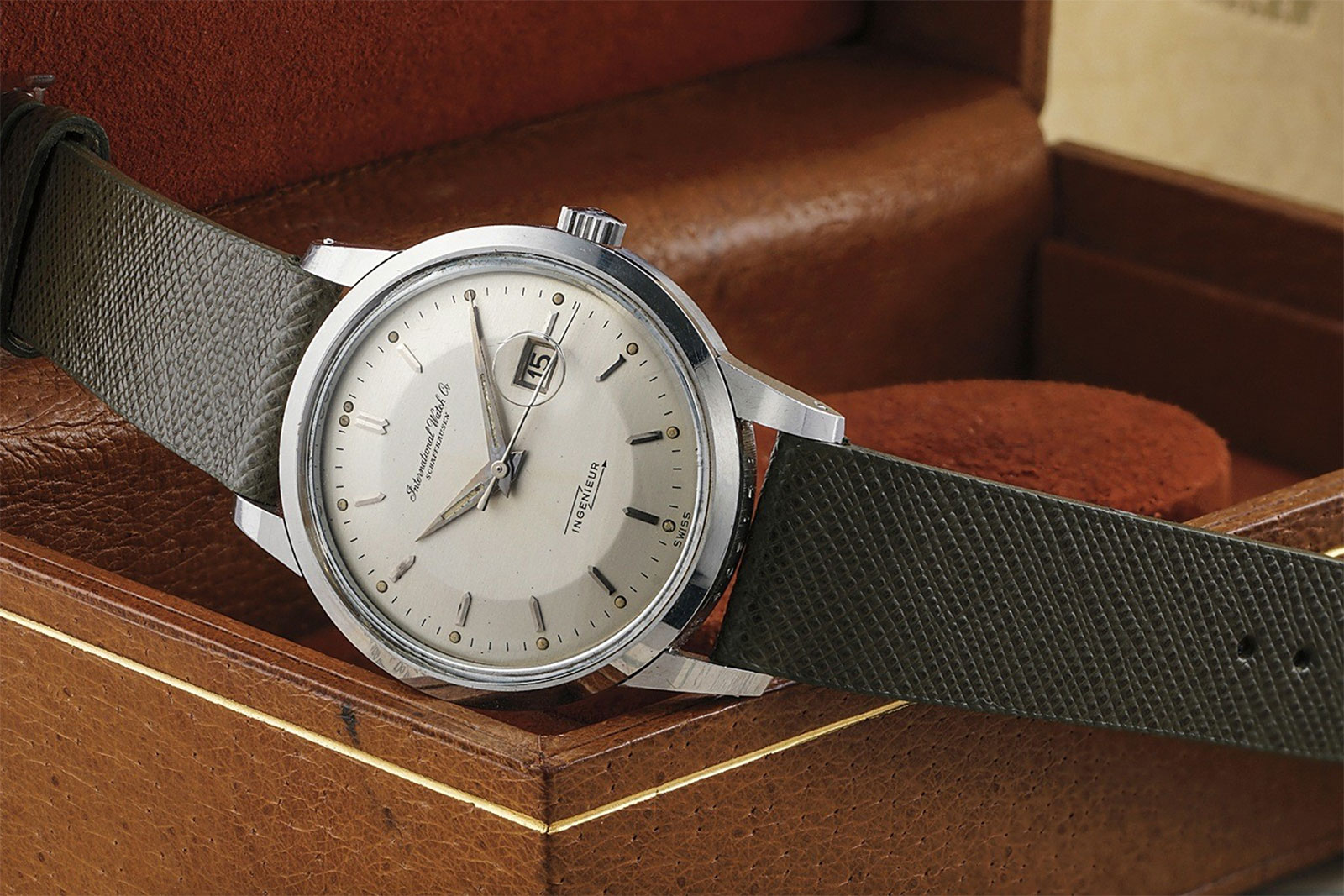
An example of the ref. 666, this one from 1959. Image – Phillips
The Ingenieur left behind its ordinary looks when Gérald Genta was given the job of redesigning the model. Remembered for penning two of the most recognisable sports watches of the modern era, the Audemars Piguet Royal Oak and Patek Philippe Nautilus, Genta was responsible for the Ingenieur SL ref. 1832, which unsurprisingly belonged to the same school of design as his better-known creations.
Sometimes considered the forgotten child in the Genta pantheon of sports watches, the ref. 1832 featured a bracelet and textured dial like his other designs of the decade. But instead of a bezel that wasn’t round, it has a bezel with five notches that allowed the bezel to be screwed into the case.
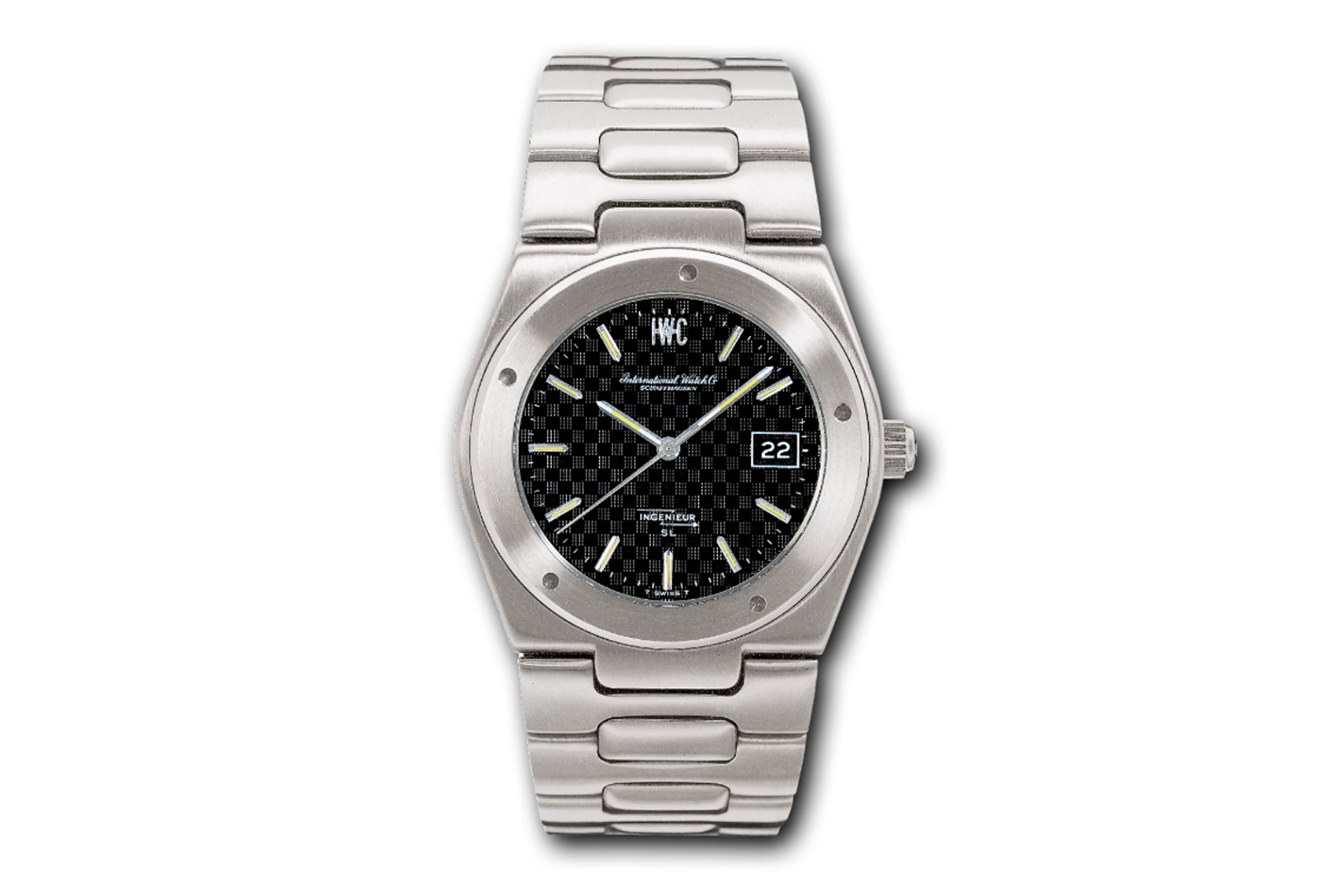
The Ingenieur SL “Jumbo” ref. 1832 introduced in 1976. Image – IWC
Measuring 40 mm, the ref. 1832 was moderately sized by today’s standards, but it was an oversized watch in its time, leading to the “Jumbo” nickname. Its immediate successors, namely the ref. 3521, retained a similar design, but on a smaller scale at just 34 mm in diameter. Despite IWC’s best efforts, however, the Ingenieur gradually fell out of favour.
It was never a bestseller to begin with, but even enthusiasts had mostly forgotten the name by the 2000s. The model underwent numerous attempt at rejuvenation, which resulted in models ranging from a chunky version with carbon composite case to a plainer, retro-style chronograph, but none achieved much commercial success. The Ingenieur 40 will no doubt sell better, it is after all the ideal design for today’s taste, although the success will be probably be moderated by its price tag.
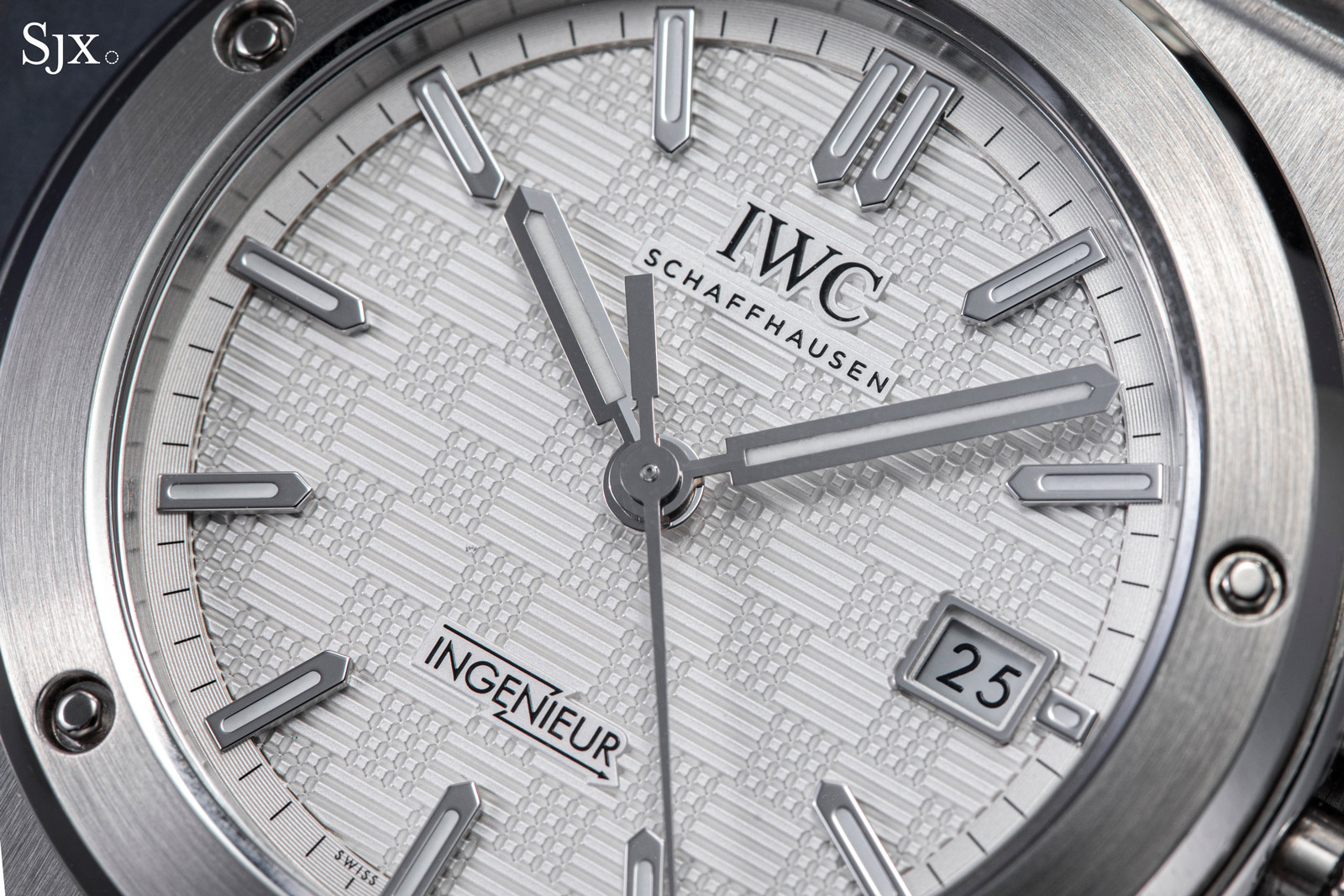
The Ingenieur 40 features a chequerboard dial motif inspired by the 1976 original
Refining the styling
At 40 mm in diameter and 10.8 mm high the new Ingenieur is arguably ideal in terms of dimensions. It has an elegant profile on the wrist that’s large enough to mark it out as a modern watch without being oversized. And in contrast to the 1976 “Jumbo” that still feels clunky due to its stiff bracelet, the Ingenieur 40 feels supple on the wrist.
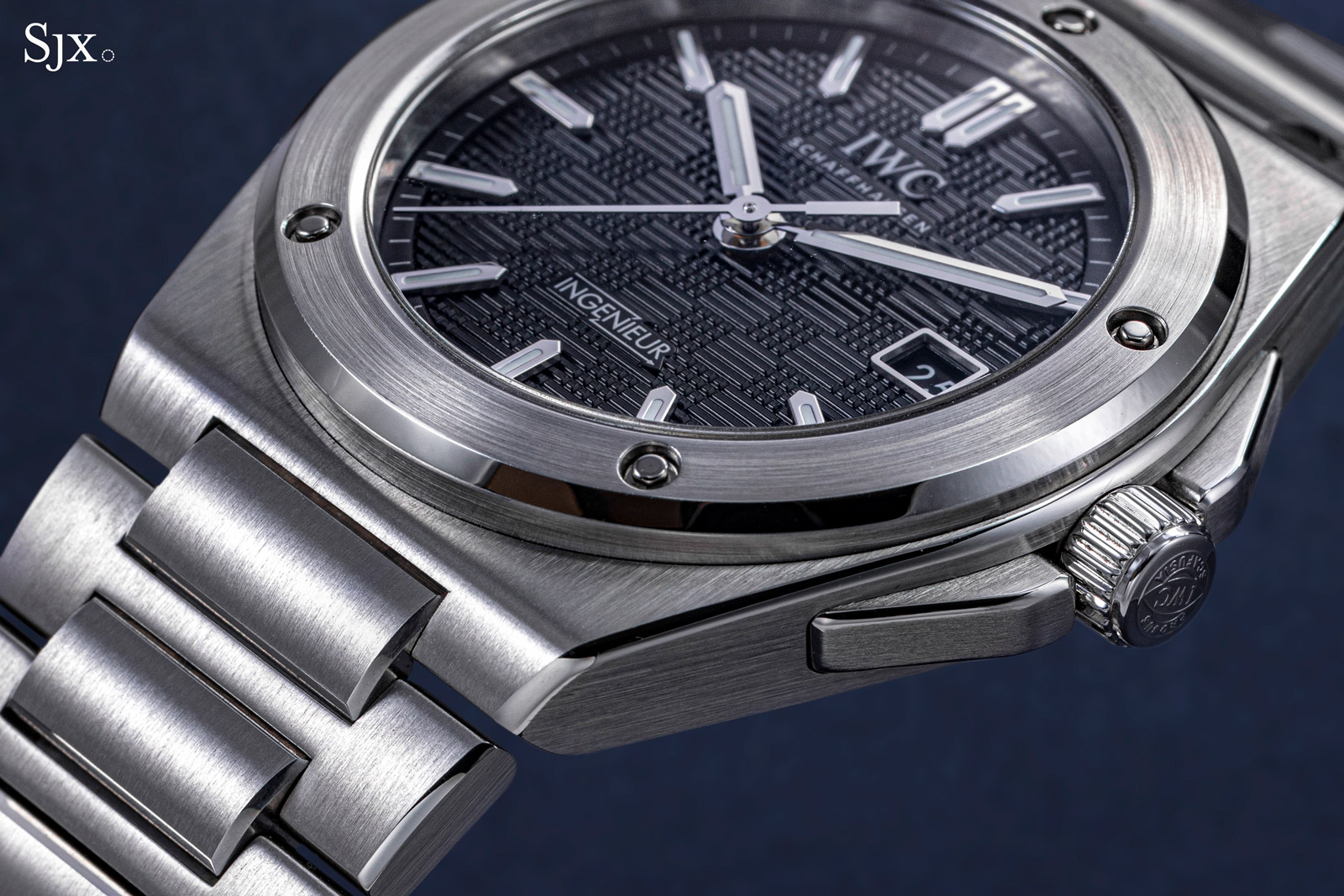
The Ingenieur 40 is essentially the “Jumbo” with refinements to the design and the addition of crown guards. Amongst its most substantive refinements is the bezel, which paradoxically looks identical to that on the original at a distance.
Instead of bring screwed into the case as on the original, the bezel on the new model is fastened with five hex-head screws, resulting in the bezel being perfectly centred with one screw positioned exactly at 12 o’clock. In contrast, the position of the bezel varied between specimens on the “Jumbo” due to its construction.
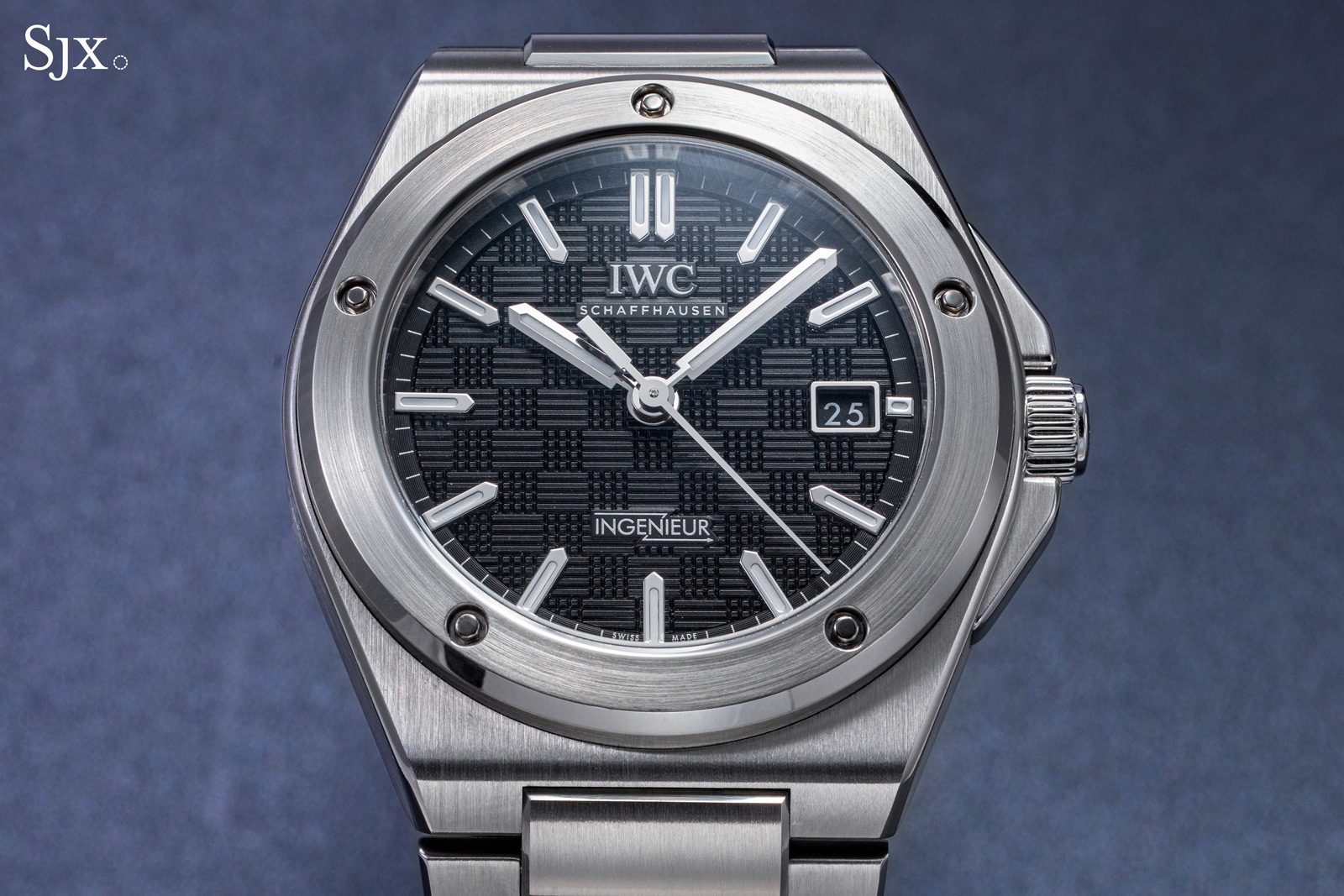
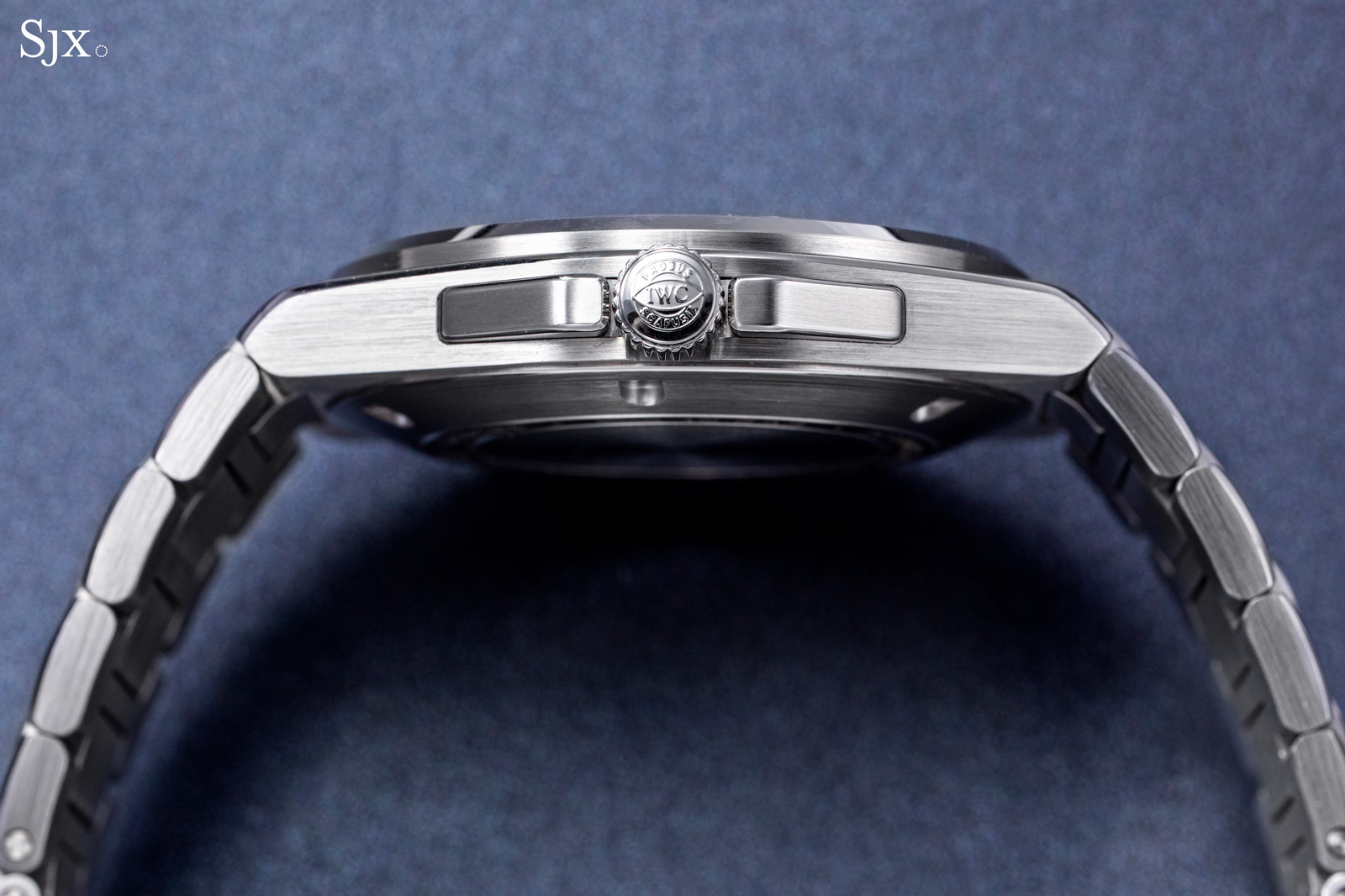
Likewise, the rest of the case been refined. It has the same silhouette as the original (save for the added crown guards), but boasts prominent polished bevels along the edges of the case, lugs, and bracelet links – as is expected from a luxury-sports watch. The original, on the other hand, had a more rudimentary finish.
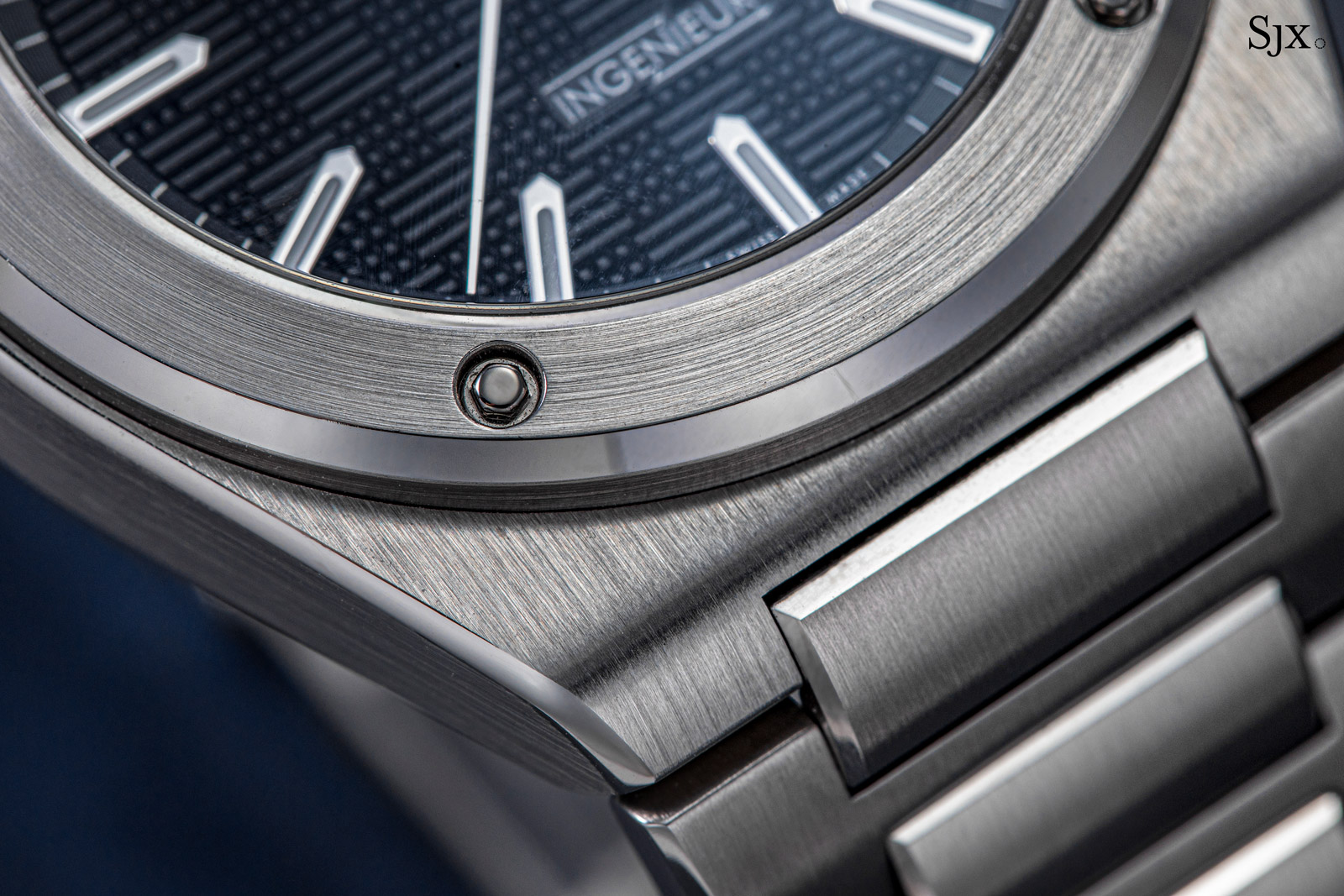
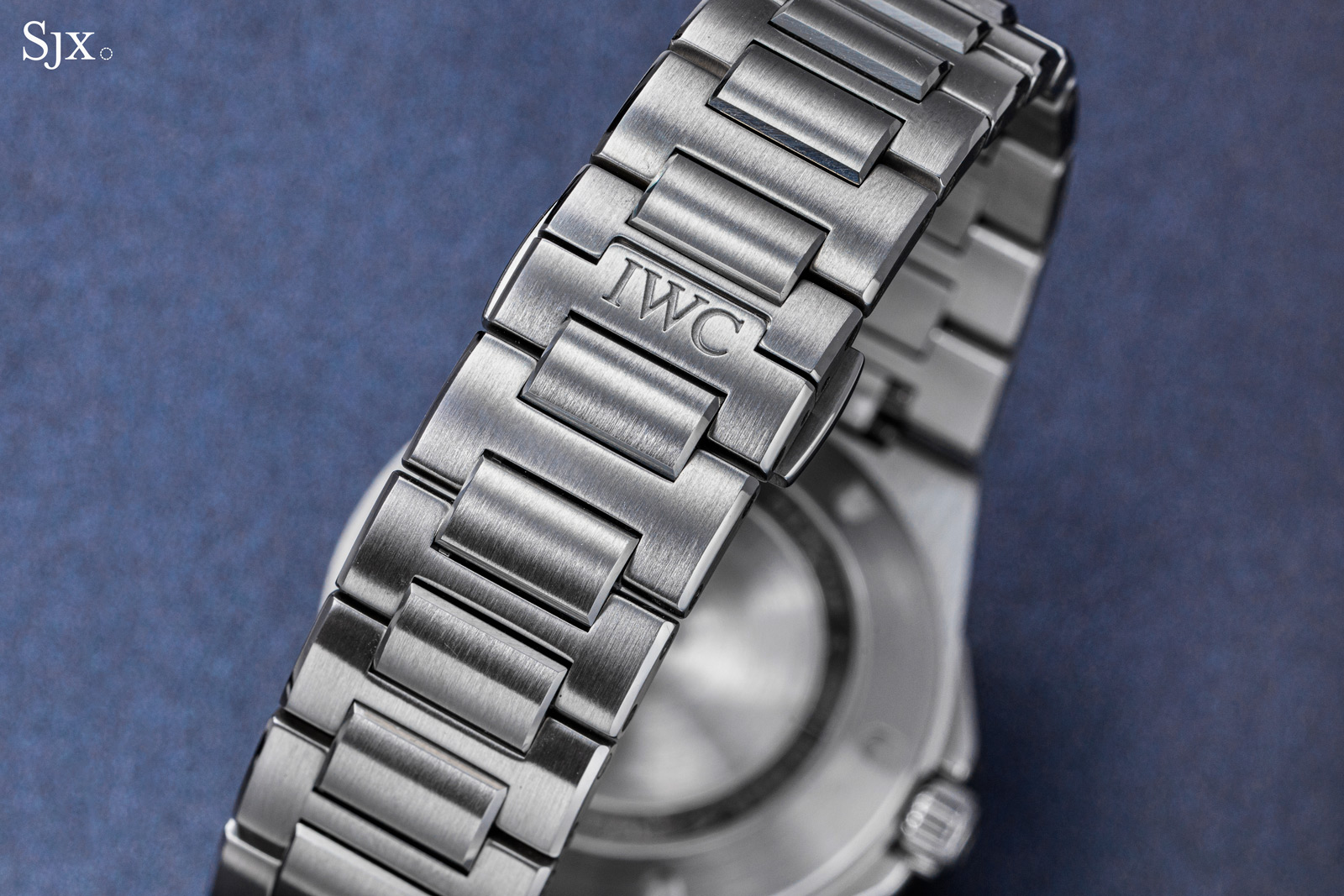
The Ingenieur 40 has an integrated bracelet with a hidden butterfly clasp
The crown guards were absent from the original “Jumbo”, and are instead drawn from more recent (and unsuccessful) iterations of the Ingenieur. They were presumably installed to connect this design to its predecessors, while also distinguishing this more clearly from the original. That said, they feel unnecessary and interrupt the lines of the case.
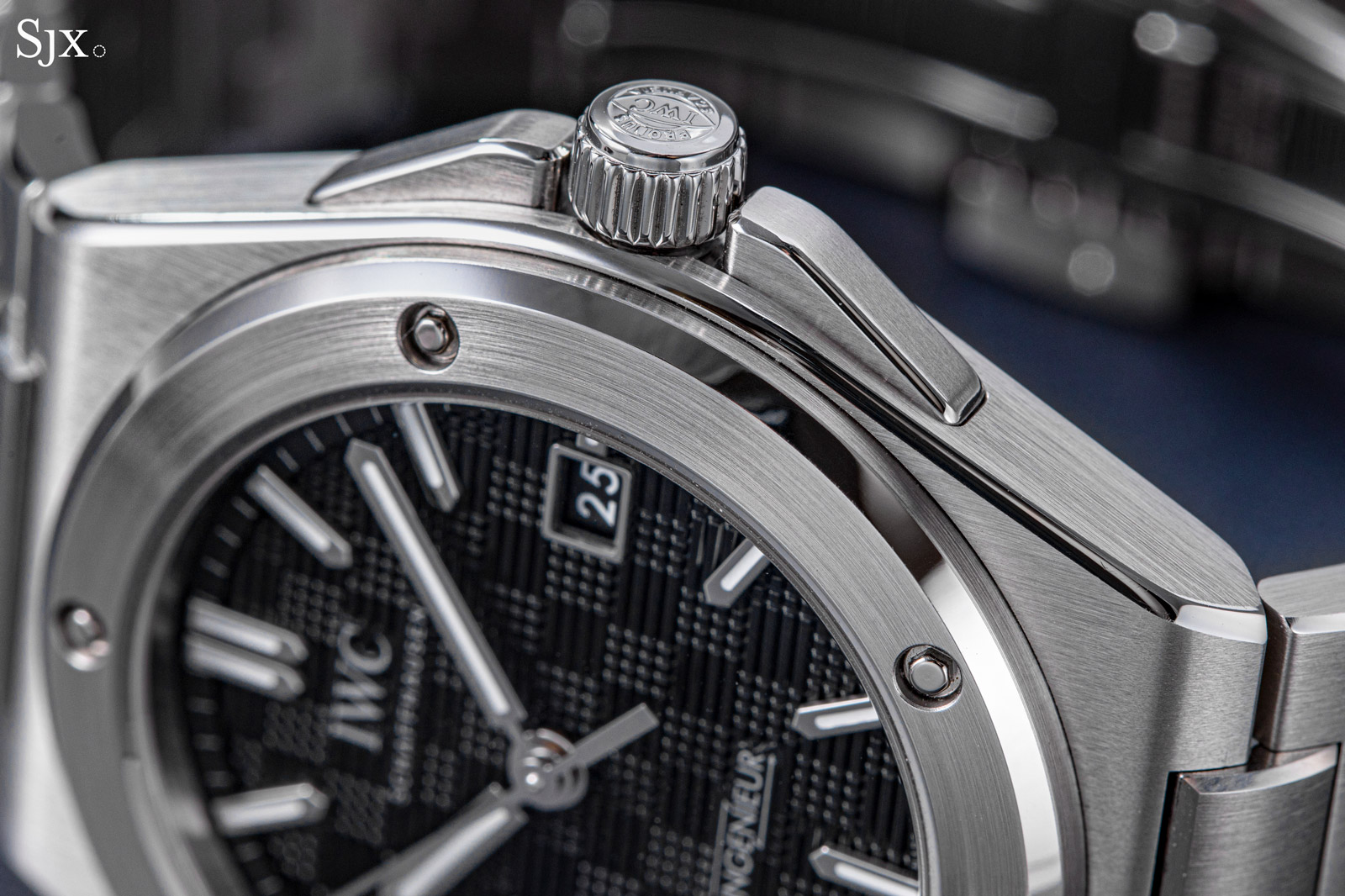
Also vintage inspired but tweaked is the dial. The IWC emblem has repositioned, though the Ingenieur emblem with its trademark lightning bolt remains above six o’clock.
Made of soft iron, the dial is first stamped to create the pattern and then galvanised to give it colour. It’s finished with a basketweave motif, described by IWC as the “grid” pattern, which is modelled on the dial found in the “Jumbo”.
The dial of the Ingenieur 40 has greater prominence than the original, as the new pattern enjoys greater definition and depth. It is stamped deeply, creating wide, deep lines that form the pattern. Up close, the stamping is evidently industrial and not especially fine, but it is a perfect match for the design.
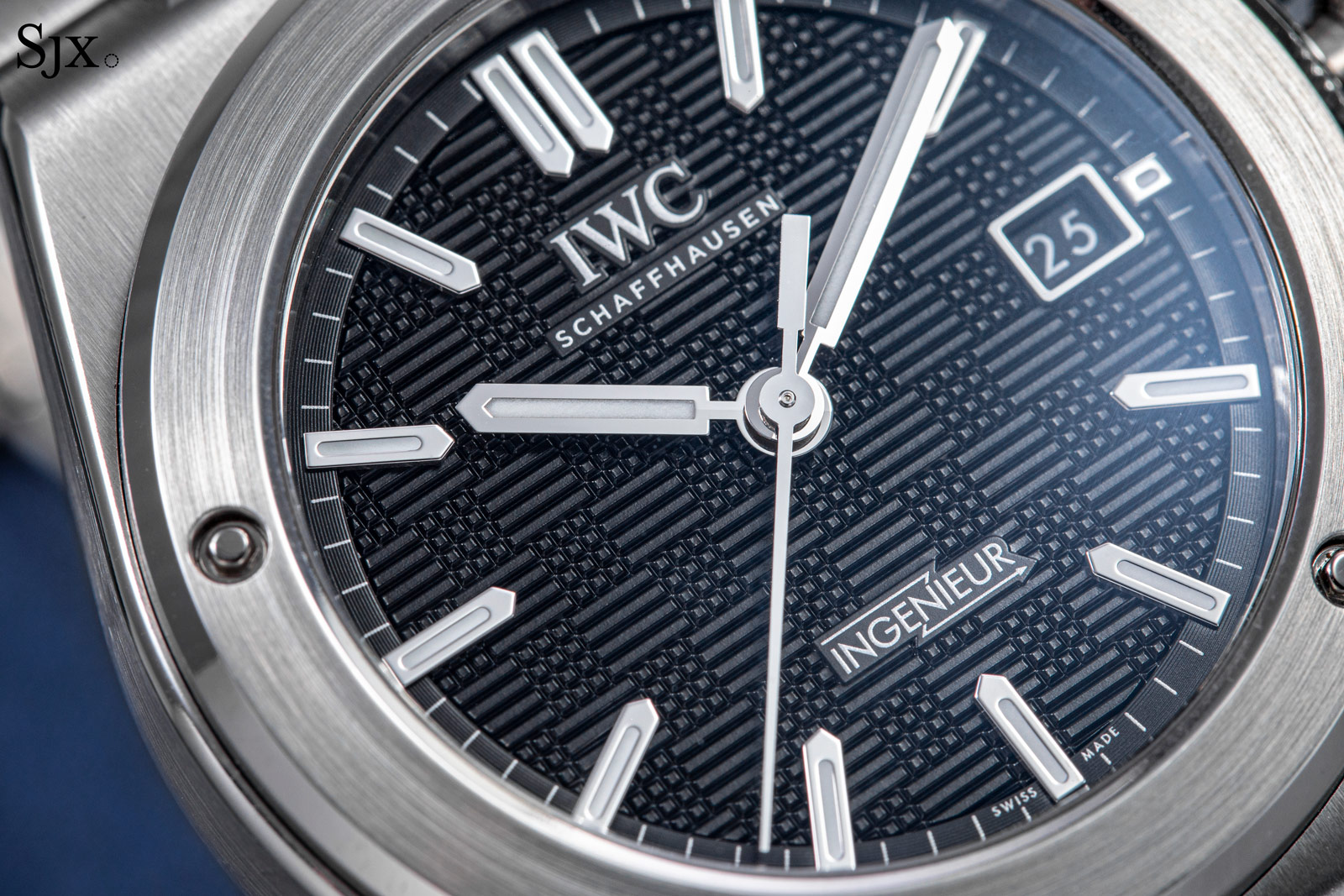
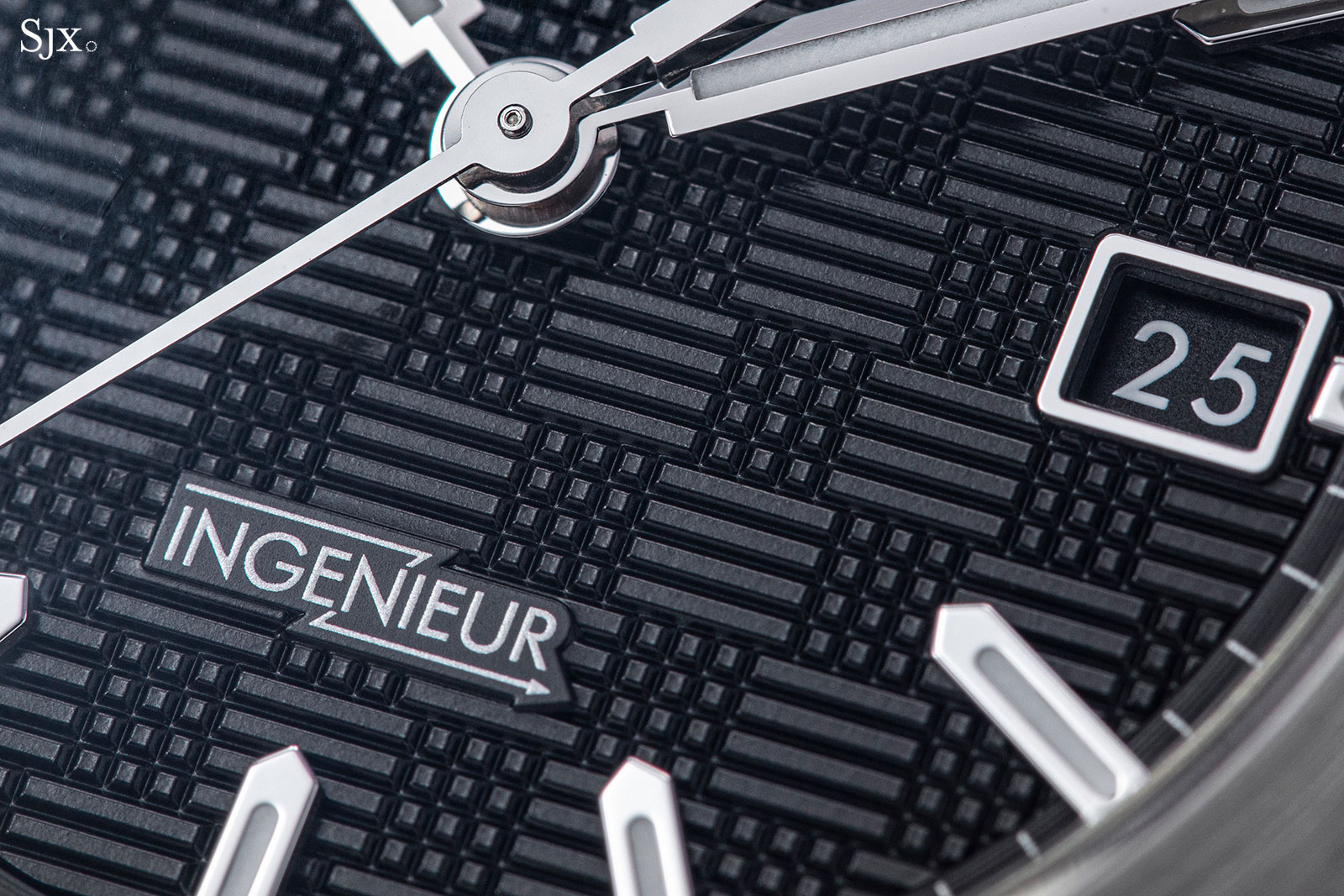
A quartet of variants
Four different dials are available for the Ingenieur 40: black, silver-plated, and “aqua” for the steel model, along with a dark grey for the titanium version. All dials are identical save for their colour.
The steel model with a black or silver dial is entirely brushed, giving it a look closest to the “Jumbo. The “aqua” dial model, however, gets a polished centre link for the bracelet, resulting in a brighter and more modern look.
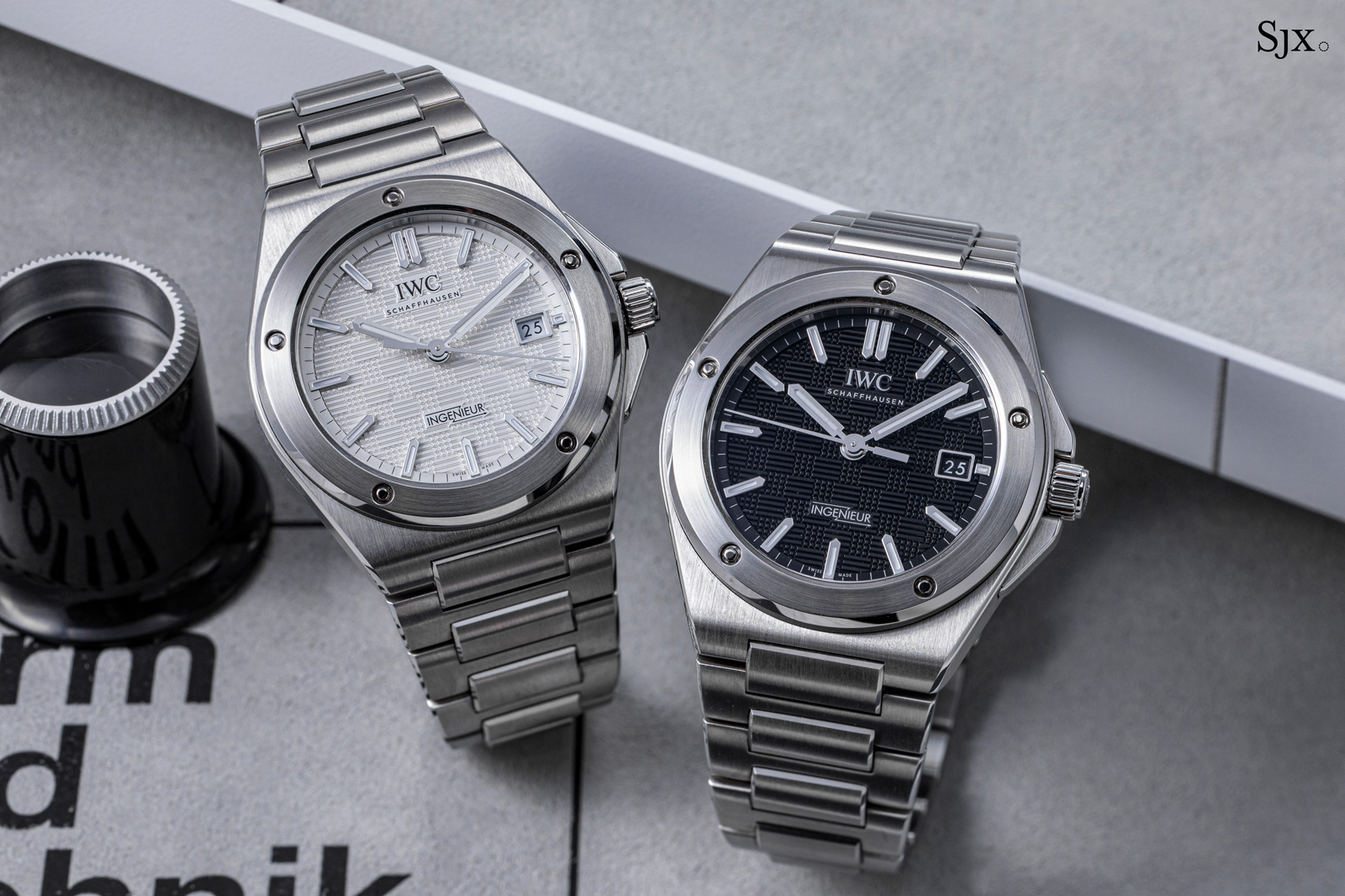
The steel Ingenieur in silver or black
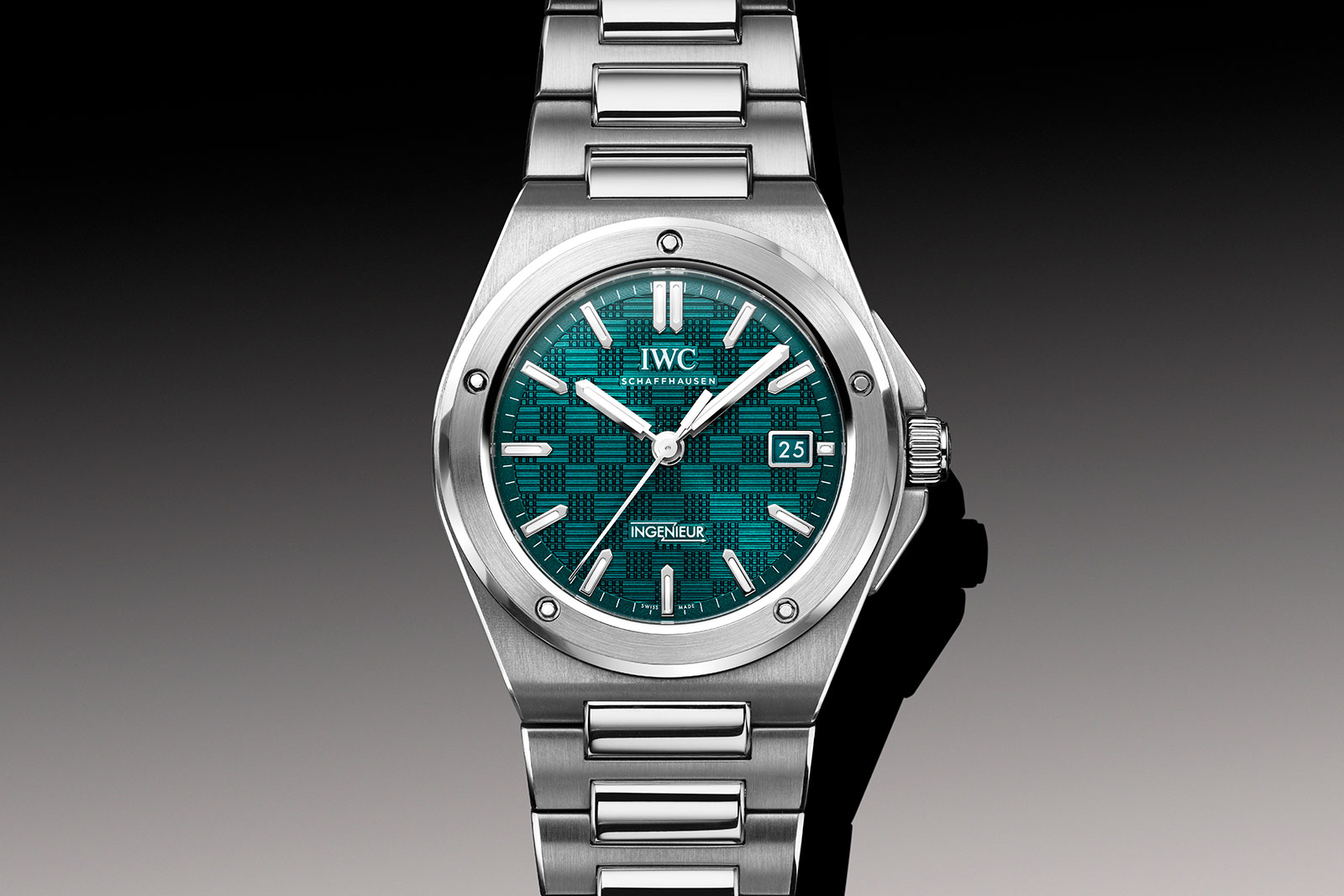
The “aqua” dial. Image – IWC
But the most no-nonsense version is the titanium model. Noticeably lighter than the steel model, the titanium Ingenieur is monochromatic and almost entirely grey save for the hour markers and hands in black.
The case and bracelet are sandblasted, giving them a finely grained finish accented by polished bevels along the edges. The frosted finish on the case and bracelet will no doubt show up scratches and scuffs more easily than the brushed finish on the steel model, rendering it arguably less practical, but it does look good.
But at 30% more than the steel model, the Ingenieur 40 in titanium is hard to digest, despite its evident charm.
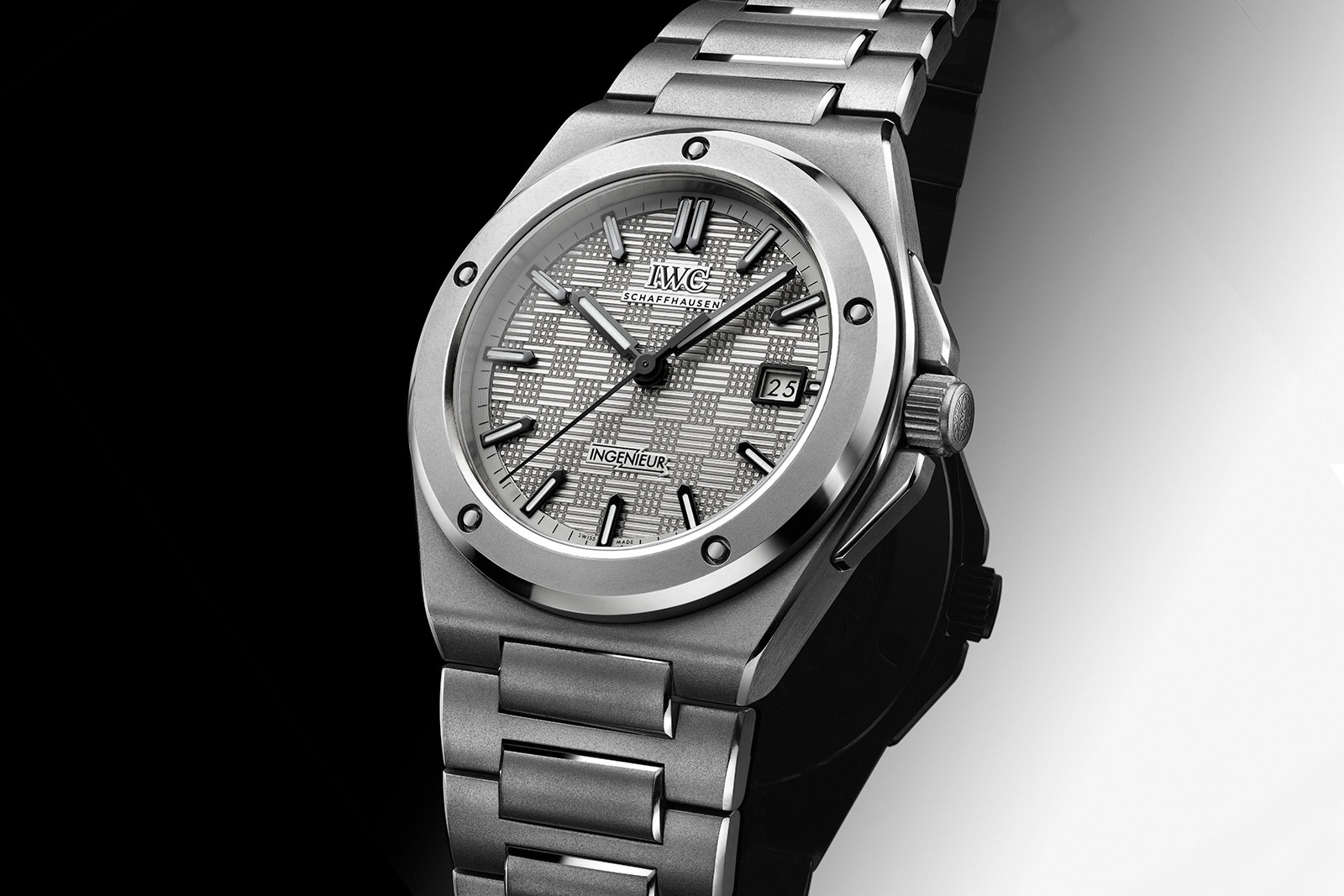
And in titanium. Image – IWC
ValFleurier powered
Inside the Ingenieur 40 is the cal. 32111, an automatic movement with . It is the same movement found on the entry-level models in IWC’s Pilot’s Watch and Portofino lines.
In terms of functionality, the cal. 32111 does well. The movement sports an escape wheel and pallet lever in silicon, which operate with minimal friction and optimal efficiency. And it has a usefully long power reserve of 120 hours, a substantial upgrade over the cal. 35111, which was previously the standard movement for IWC’s entry-level watches. Based on the Sellita SW300-1, the cal. 35111 had a power reserve of just 42 hours.
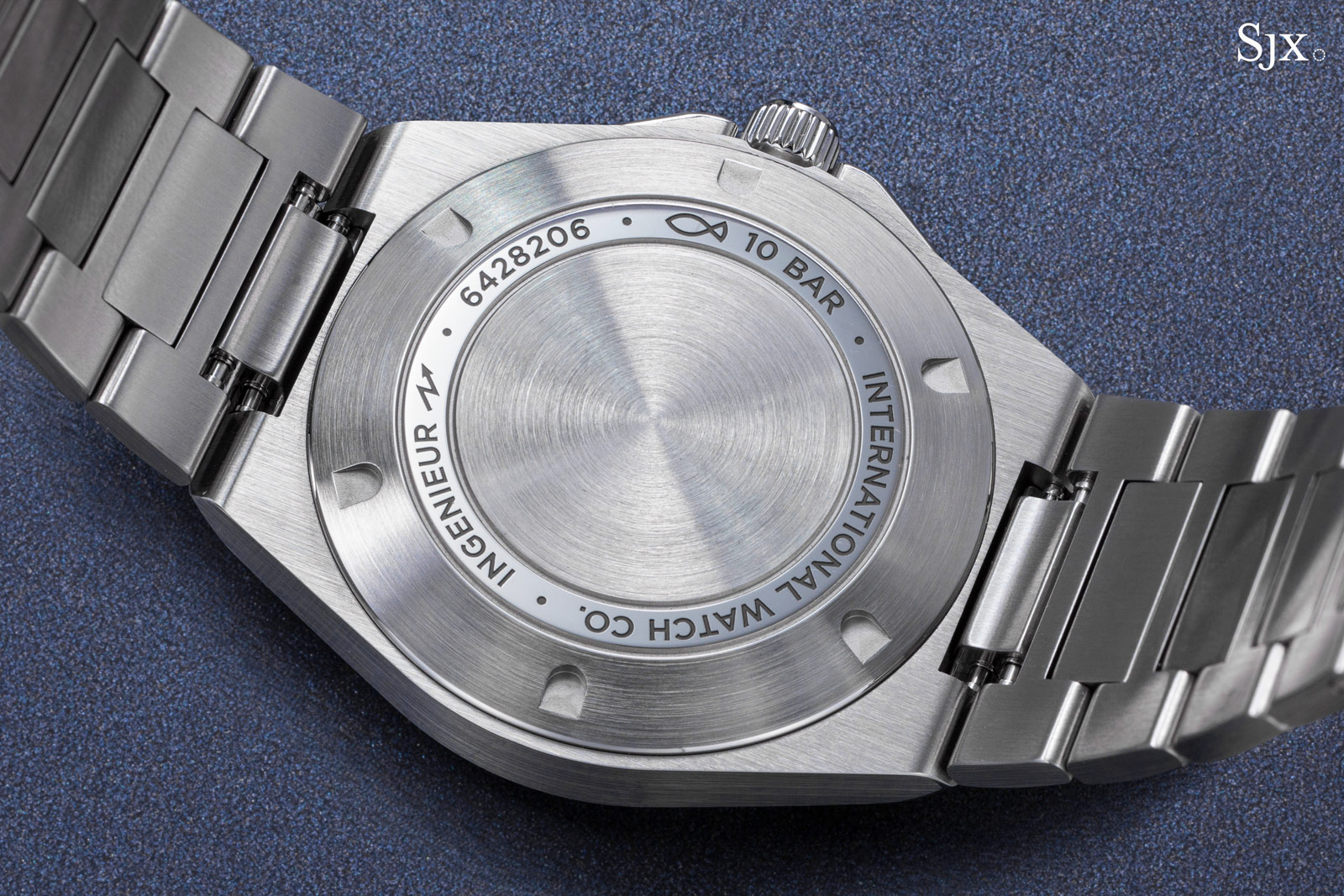
But the cal. 32111 is still largely a movement catered to entry-level models, which is the Ingenieur 40 is decidedly not. The cal. 32111, for instance, is the only “manufacture” movement used by IWC that has an Etachron regulator index, a feature typically associated with less refined movements.
The cal. 32111 is part of the 32000 family, which is derived from the cost-efficient workhorse movement developed by ValFleurier, the movement factory owned by Richemont, which owns IWC along with brands like A. Lange & Söhne and Cartier. Variations of this movement can also be found in entry-level watches from brands such as Panerai and Baume & Mercier, although admittedly some of the other brands that use related calibres also install them in pricey watches.
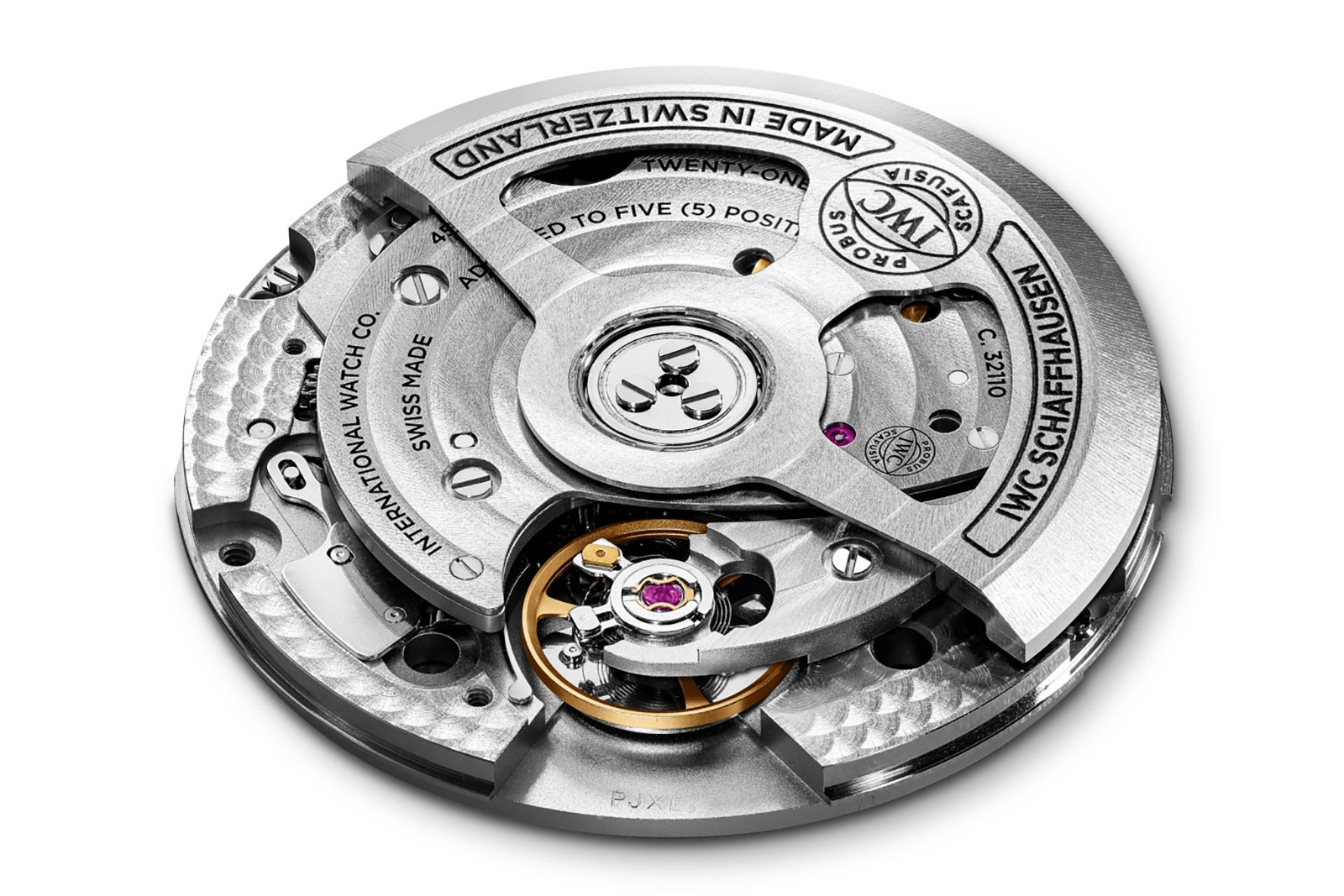
The IWC cal. 32110 that is essentially identical to the cal. 32111 found in the Ingenieur 40. Image – IWC
Concluding thoughts
With the Ingenieur 40, IWC has answered the call from enthusiasts eager for the model’s resurrection. With the attention to detail paid to its design, the rebooted Ingenieur is executed well. It has both visual and tactile appeal, particularly in titanium. But the praise comes with a big caveat: the price and movement are clearly a mismatch.
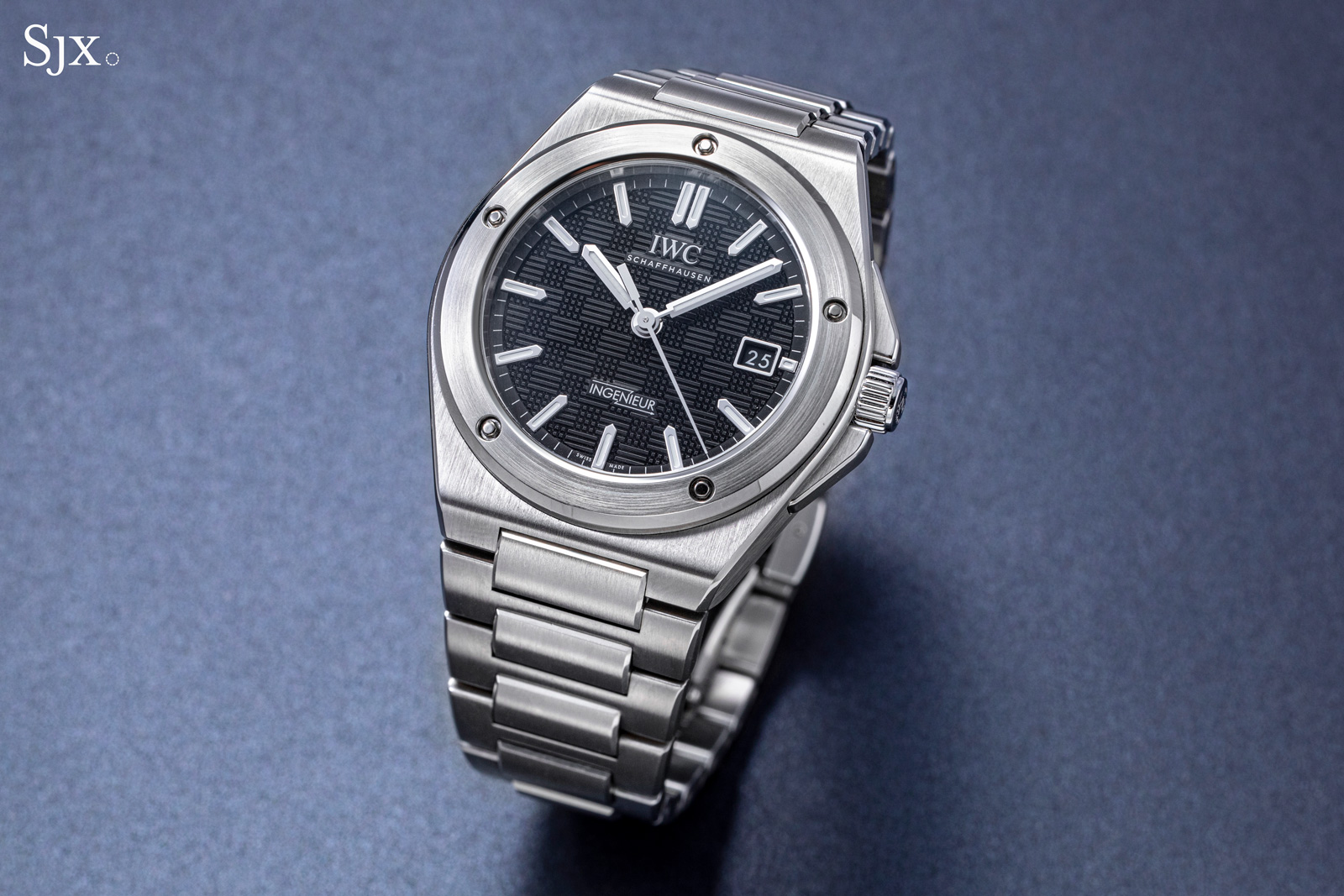
Key facts and price
IWC Ingenieur 40
Ref. IW328901 (Stainless steel and black dial)
Ref. IW328902 (Stainless steel and silver-plated dial)
Ref. IW328903 (Stainless steel and aqua dial)
Ref. IW328904 (Titanium and grey dial)
Diameter: 40 mm
Height: 10.8 mm
Material: Stainless steel or titanium
Crystal: Sapphire
Water resistance: 100 m
Movement: Cal. 32111
Features: Hours, minutes, central hacking seconds, and date
Frequency: 28,800 beats per hour (4 Hz)
Winding: Automatic
Power reserve: 120 hours
Strap: Matching bracelet
Limited edition: No
Availability: Available at IWC boutiques and IWC.com
Price: Steel – US$11,700 or 17,300 Singapore dollars; Titanium – US$14,600 or 21,700 Singapore dollars
For more, visit IWC.com.
Back to top.

